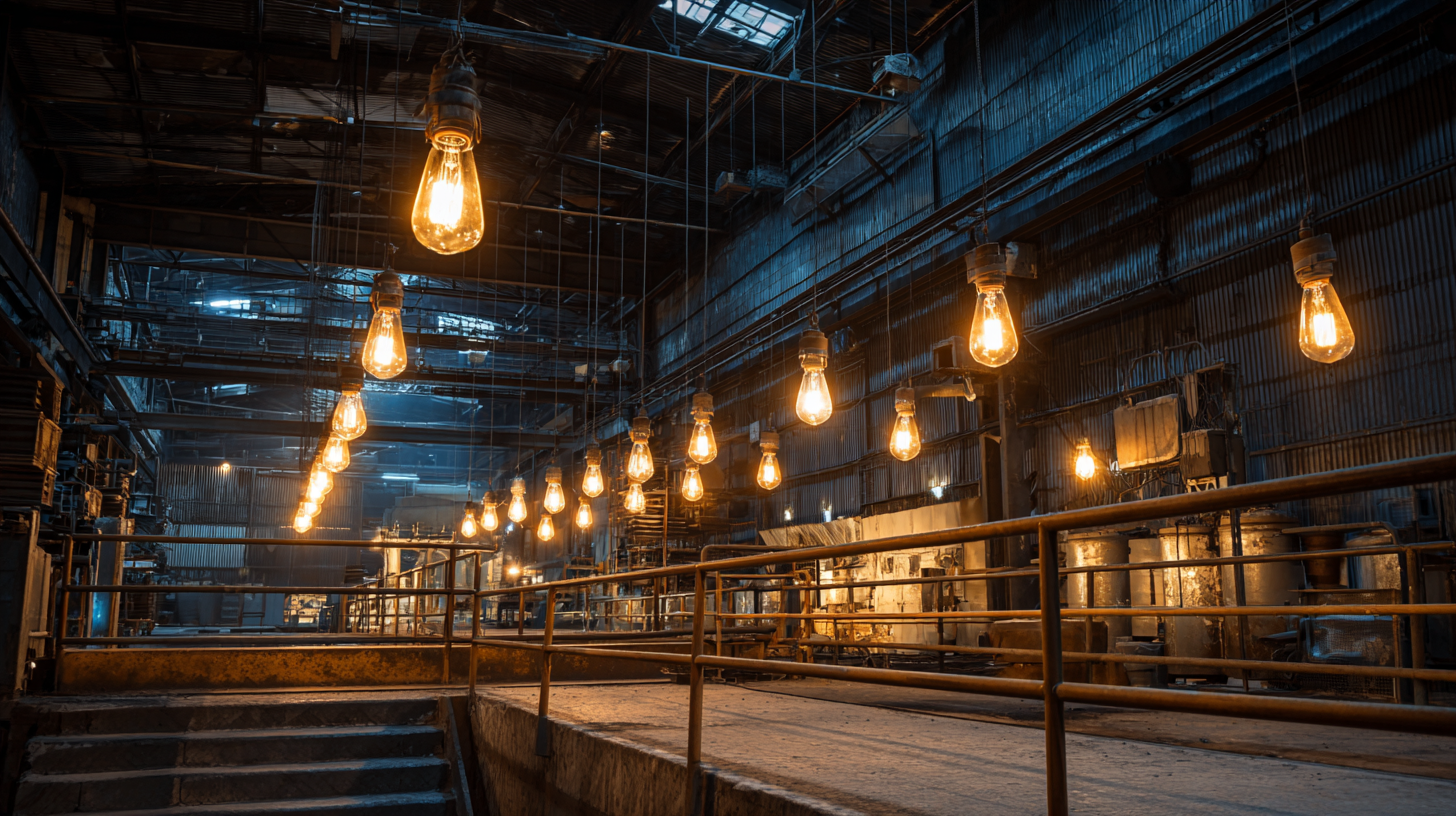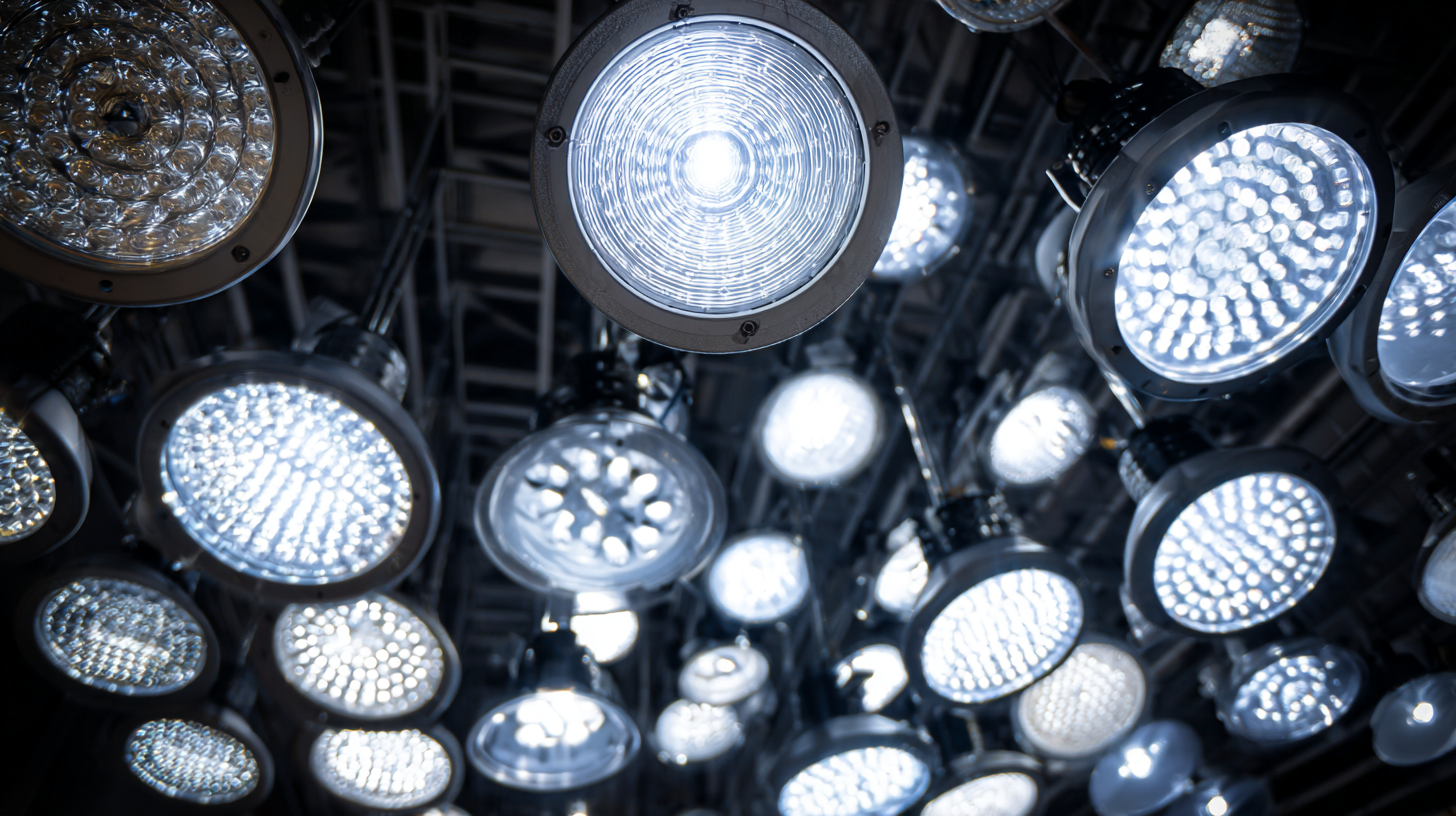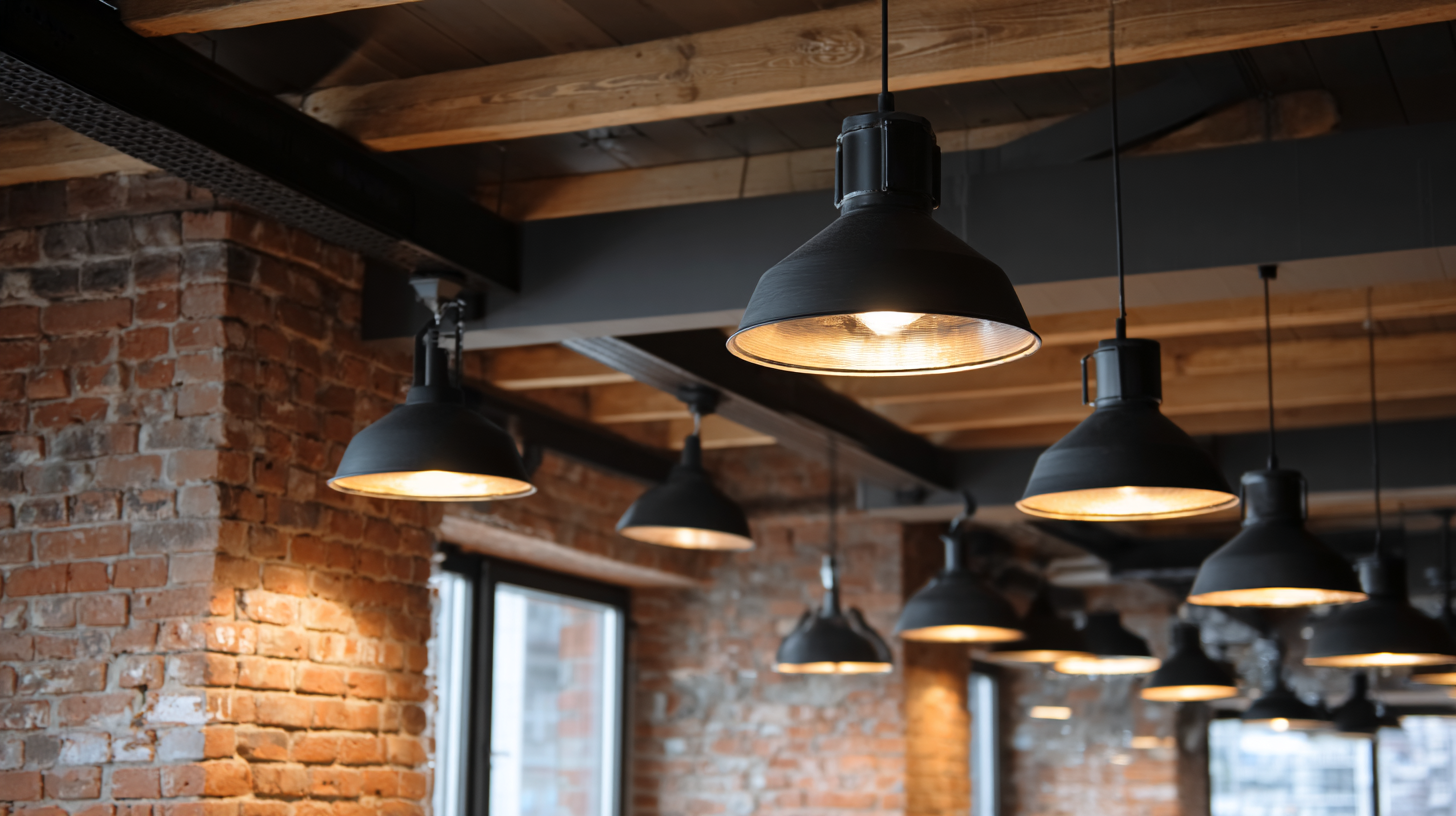
As industries continue to evolve towards greater energy efficiency, the selection of appropriate Industrial Lighting has become a critical factor in reducing operational costs and enhancing productivity. According to the U.S. Department of Energy, lighting accounts for nearly 30% of energy consumption in commercial buildings, highlighting the significant impact of lighting choices on overall energy usage. Furthermore, a report by the International Energy Agency suggests that implementing advanced lighting technologies can lead to energy savings of up to 50%. With the shift toward sustainable practices and the global emphasis on energy efficiency, choosing the right industrial lighting products, particularly from top-quality manufacturers like those in China, becomes paramount. This blog will explore the essential criteria and options available for industries looking to optimize energy consumption through strategic lighting solutions.

Energy efficiency has become increasingly important in the industrial lighting sector, especially as industries seek sustainable practices to improve their economic performance while minimizing environmental impact. With modern advancements like LED technology, industries can significantly reduce energy consumption. Studies highlight that transitioning from fluorescent lights can lead to a reduction in energy usage by up to 50%, which ultimately contributes to lower operational costs and reduces greenhouse gas emissions.
In sectors such as floriculture, employing energy-efficient lighting solutions, including advanced LED systems, can reshape the entire production process. Research indicates that optimal combinations of energy-efficient measures in greenhouse settings can enhance both yield and savings, showcasing a direct correlation between improved energy practices and economic viability. Moreover, as industrial environments consistently evaluate their energy consumption, efficient lighting systems not only support sustainability goals but also align with broader economic growth strategies, as seen in the top ten energy-efficient countries. By adopting smart technologies like luminaires with automatic dimming controls, industries can further enhance energy conservation, underscoring the importance of innovative lighting solutions in achieving operational excellence and environmental stewardship.

When selecting industrial lighting solutions, there are several key factors to consider to ensure optimal energy efficiency. One of the primary considerations is the type of lighting technology being used.
LED lights, for example, not only consume less energy compared to traditional incandescent or fluorescent lights but also have a longer lifespan, reducing the frequency of replacements and maintenance costs.
Another critical factor is the appropriate wattage for the specific application. Understand the application environment; whether it's a warehouse, manufacturing plant, or an assembly line, choosing the right wattage can significantly impact energy consumption. For instance, high-wattage lights may not be needed in areas with reflective surfaces that enhance visibility.
Tips: Evaluate the existing layout and determine the number of fixtures required. In addition, consider investing in smart lighting controls that allow for adjustments based on occupancy or natural light levels, further improving energy savings. Regularly reassessing your lighting needs as production processes evolve will also ensure continued efficiency.
When it comes to optimizing energy efficiency in industrial settings, selecting the right type of lighting is crucial. Among the most common options are LED and fluorescent lights, each offering distinct benefits and drawbacks. LED lighting has rapidly gained popularity due to its superior energy efficiency and longevity, providing significant savings on electricity bills and maintenance costs. With a typical lifespan of up to 50,000 hours, LED lights reduce the frequency of replacements, allowing facilities to minimize downtime and labor expenses.
On the other hand, fluorescent lighting has been a staple in industrial environments for decades. These lights are generally less expensive upfront compared to LEDs and can be suitable for large spaces due to their broad coverage. However, fluorescent bulbs contain mercury and have a shorter lifespan of around 10,000 hours, leading to higher disposal costs and environmental concerns. Additionally, their energy efficiency is inferior when compared to the latest LED technologies. Ultimately, understanding the specific application needs and long-term goals of an industrial space will help in making an informed decision about which lighting type aligns best with efficiency objectives.
This chart presents the energy efficiency of different types of industrial lighting, measured in lumens per watt. LED lighting stands out as the most energy-efficient option, followed by fluorescent, HID, and incandescent lighting. Selecting the right type of lighting can significantly impact energy consumption and operational costs in industrial settings.
When evaluating the role of lighting design in energy savings, it’s essential to consider not only the type of fixtures and bulbs used but also their placement and operation. Strategic lighting design can significantly reduce energy consumption by ensuring that light is directed where it is needed most, minimizing waste. For instance, implementing task lighting in specific areas, rather than relying solely on ambient light, can cut down on the overall energy used while enhancing productivity.

Additionally, integrating smart lighting systems can further amplify energy efficiency. Systems that utilize sensors to adjust lighting based on occupancy and natural light levels can lead to substantial savings. For example, dimming lights when a workspace is unoccupied or utilizing daylight harvesting techniques can reduce reliance on artificial light. By adopting a holistic approach to lighting design, industries can create environments that are not only energy-efficient but also promote well-being and efficiency among workers.
When it comes to implementing and maintaining energy-efficient lighting systems in industrial settings, careful planning and execution play a pivotal role. One essential tip is to conduct a comprehensive energy audit to understand the specific needs of your facility. This audit will help identify areas where lighting can be improved or upgraded, ensuring that you choose the right fixtures and technologies that align with your energy efficiency goals.
Another effective strategy involves selecting the appropriate type of lighting. LED fixtures are a popular choice due to their longevity and low energy consumption. Additionally, using smart lighting controls, such as motion sensors and timers, can significantly reduce energy usage by ensuring lights are only on when needed. Regular maintenance, including cleaning fixtures and checking for damaged bulbs or fixtures, can help keep the lighting system performing at its best and further enhance energy savings. By following these tips, facilities can achieve optimal energy efficiency in their lighting systems.
| Lighting Type | Energy Consumption (W) | Lifespan (Hours) | Initial Cost ($) | Annual Energy Cost ($) |
|---|---|---|---|---|
| LED | 50 | 50,000 | 150 | 30 |
| Fluorescent | 32 | 20,000 | 75 | 50 |
| High-Intensity Discharge (HID) | 400 | 15,000 | 300 | 250 |
| Incandescent | 100 | 1,000 | 50 | 120 |
Let us help you get started with our superior LED lighting products.
Get all the latest news from BrightLED.
Copyright © Bright LED. All rights reserved.
STAY CONNECTED

